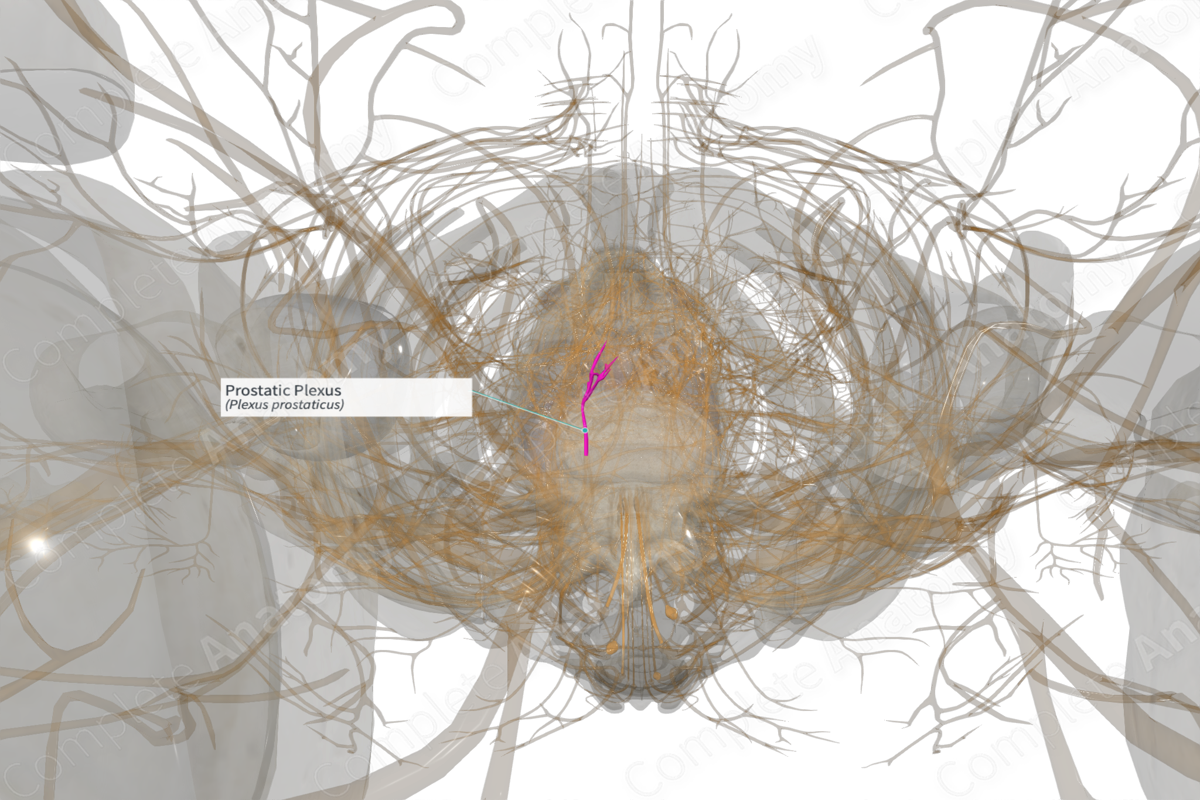
Quick Facts
Sympathetic Contribution: Preganglionic efferent fibers from L1-L2 spinal cord levels travel via the hypogastric nerve and inferior hypogastric plexus.
Parasympathetic Contribution: Preganglionic efferent fibers from S2-S4 spinal cord levels travel via the pelvic splanchnic nerves to the prostatic portion of the inferior hypogastric plexus.
Course: The prostatic plexus is a bilateral plexus found in the fascial layer of the prostate.
Sympathetic Supply: These efferent fibers innervate the vascular smooth muscle and the smooth muscle fibers of the prostate, ejaculatory ducts, and prostatic urethra.
Parasympathetic Supply: These efferent fibers innervate glandular tissue of the prostate, ejaculatory ducts, and prostatic urethra.
Contributing Nerves
The prostatic plexus is the portion of the inferior hypogastric plexus located in the external fascia of the prostate. It is continuous with the rectal and vesical plexuses.
Course
The prostatic plexus lies within the fascial covering of the prostate gland.
Branches
The cavernous nerve emerges from the prostatic plexus to run down the external surface of the urethra on its way to the erectile tissue of the penis.
The prostatic plexus is connected to the rectal and vesical plexuses, all three of which are part of the inferior hypogastric plexus.
Supplied Structures
The prostatic plexus is a mixed plexus conveying both sympathetic and parasympathetic nerves to the viscera of the pelvis, and visceral sensory nerves back to the CNS.
Sympathetic efferent fibers of the prostatic plexus innervate vascular smooth muscle and smooth muscle of pelvic viscera including the prostate gland, ejaculatory ducts, and prostatic urethra.
Parasympathetic efferent fibers of the prostatic plexus innervate smooth muscle and glands of pelvic viscera including the prostate gland, ejaculatory ducts, and prostatic urethra (White, Xie and Ventura, 2013).
Visceral sensory fibers carrying visceral afferents from the prostate, ejaculatory ducts, and prostatic urethra run through the prostatic plexus on their way to lumbar and sacral levels of the spinal cord.
List of Clinical Correlates
—Erectile dysfunction
—Benign prostatic hyperplasia
References
White, C. W., Xie, J. H. and Ventura, S. (2013) 'Age-related changes in the innervation of the prostate gland: implications for prostate cancer initiation and progression', Organogenesis, 9(3), pp. 206-215.




